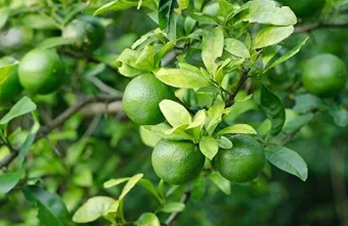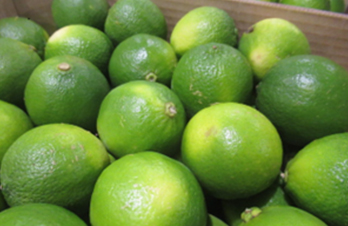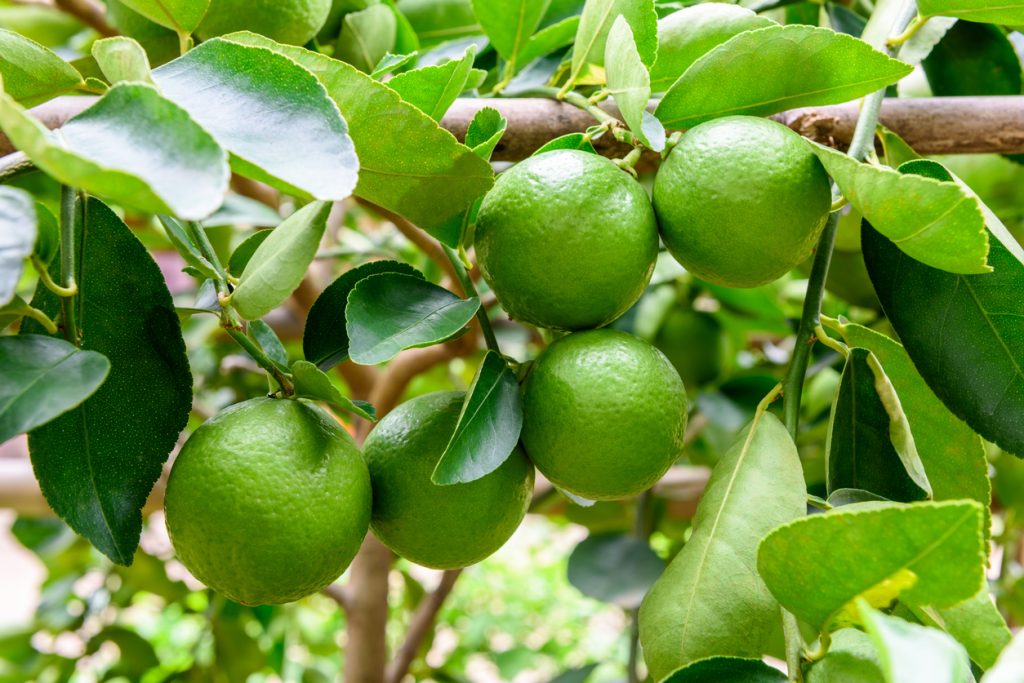Organic limes are a popular citrus fruit known for their tangy flavor and versatility in various culinary delights. But growing organic limes comes with certain challenges. One issue that often affects the organic lime supply chain is the presence of white patches on the skin. These harmless patches, also known as ‘white belly’, can lead to significant losses in value within the lime supply chain, which is in fact unnecessary. Organic lime growers may face difficulties in selling their produce due to the perceived lower quality (in the eyes of customers/consumers), resulting in financial losses and environmental impact. In this article, we aim to shed light on the nature of these patches and explore the sustainable benefits of embracing these imperfectly perfect organic limes.
What are these white patches?
The white patches on limes are discolorations that appear on the fruit’s skin due to lack of sunshine. They can range from small spots to larger patches, giving the lime a less appealing appearance. While they may cause concern for both customers and consumers, it’s important to note that these patches do not affect the taste, quality, or nutritional value of the limes. To cultivate the most ideal lime, growers employ certain techniques to ensure optimal appearance. One such practice involves selectively removing fruits from lime bunches or thinning out plant leaves to allow sunlight to enhance the desired color of the limes. This is a time-consuming, expensive operation and is associated with a lot of crop loss. Fruit thinning in conventional agriculture is done with chemical compounds that are not allowed in organic agriculture. One more reason for consumers to buy organic limes!
Reality limes vs. ideal limes
Limes in reality
Limes that have white patches do not differ in taste, juice content, or shelf life compared to limes without these patches. The white patches do not affect the overall quality or characteristics of the fruit. So, consumers can enjoy the same delicious flavor, refreshing juice, and extended shelf life of limes that have white patches. It’s important to remember that these patches are harmless and should not be a cause for concern when selecting or using limes in various culinary applications.
Limes in the ideal world
While the ideal limes are often sought after due to their appearance, it’s essential to consider the broader implications they can have on the lime industry. The ideal lime without white patches is a delightful specimen that requires a great deal of effort and care. However, achieving this level of perfection comes at a cost. Cultivating these flawless limes demands more manual labor as each fruit/bunch needs to be individually inspected. This means that more time and effort are invested throughout the entire cultivation process. Furthermore, the emphasis on avoiding white patches may result in a slightly lower yield per plant per year, as some fruits may not meet the stringent requirements. It’s important to acknowledge that these ideal limes represent just one variation within the wide diversity of limes available and that we should aim for reality limes with a slight imperfection in color.


Explore the sustainable benefits of embracing imperfectly perfect organic limes
- Embracing nature’s variations:
These limes may not meet the conventional standards of perfection, but they are a testament to the natural variations that occur in organic farming. By embracing these variations, we are promoting a more diverse and resilient agricultural system that respects the uniqueness of each fruit, while reducing our reliance on strict cosmetic standards. - Reducing food waste:
One of the significant sustainable benefits of these limes is the reduction in food waste. These limes are perfectly healthy and delicious, with no compromise in taste or nutritional value. By appreciating their natural beauty, consumers can help decrease the unnecessary waste of perfectly good organic produce and supporting a more sustainable food system. - Supporting organic farmers:
When consumers choose to purchase organic limes with white patches, they are directly supporting organic farmers who work tirelessly to cultivate these fruits using sustainable practices. By recognizing the value of these limes beyond their appearance, consumers are encouraging and rewarding the efforts of farmers who prioritize environmentally friendly methods, such as avoiding synthetic pesticides and promoting a healthy soil. This support enables farmers to continue their sustainable practices and contribute to a healthier ecosystem. - Promoting biodiversity:
It also contributes to the preservation of biodiversity. In organic farming, a diverse range of plant species is encouraged to thrive alongside lime orchards. This promotes a balanced ecosystem, attracting beneficial insects like bees and butterflies, which aid in pollination and promote biodiversity. By choosing these limes, consumers indirectly support the conservation of pollinators and the overall health of the environment.
We hope that the information provided above might have positively influenced your opinion on the so called “imperfect” organic limes. By working together, we can contribute to a more sustainable world!
If you have any questions, please feel free to contact our sales team: sales@otcorganics.com.
Your OTC Organics team


